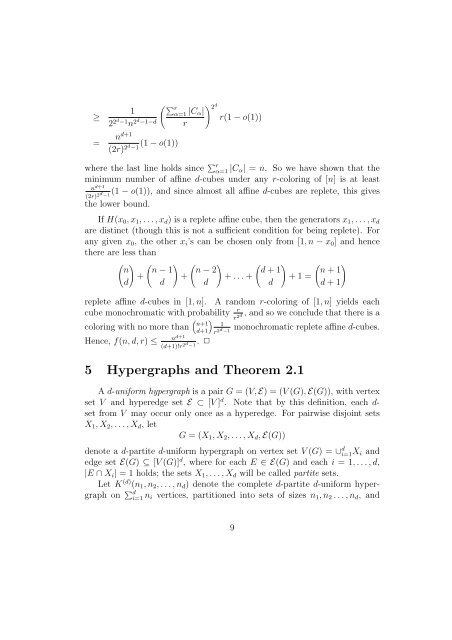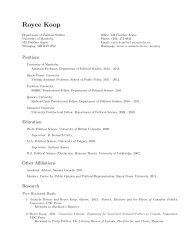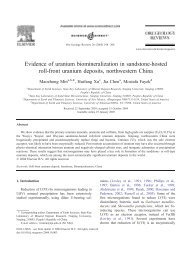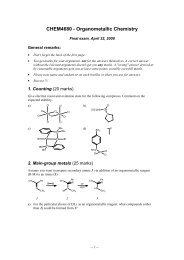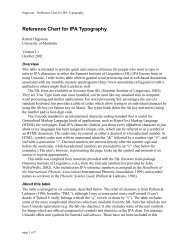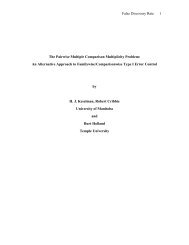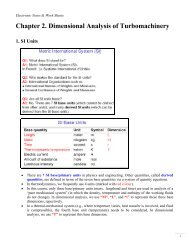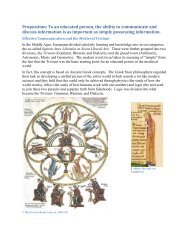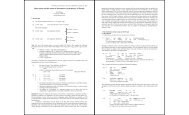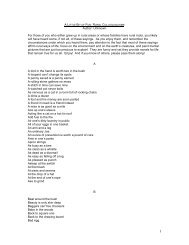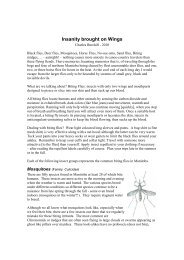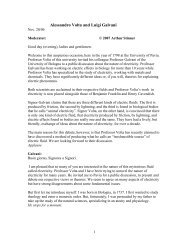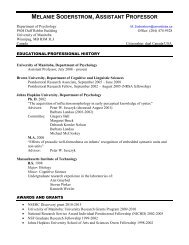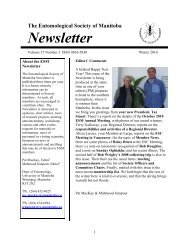Extremal problems for affine cubes of integers - University of Manitoba
Extremal problems for affine cubes of integers - University of Manitoba
Extremal problems for affine cubes of integers - University of Manitoba
Create successful ePaper yourself
Turn your PDF publications into a flip-book with our unique Google optimized e-Paper software.
≥<br />
=<br />
1<br />
2 2d −1 n 2 d −1−d<br />
nd+1 (2r) 2d (1 − o(1))<br />
−1<br />
<br />
rα=1 2d |Cα|<br />
r<br />
r(1 − o(1))<br />
where the last line holds since r α=1 |Cα| = n. So we have shown that the<br />
minimum number <strong>of</strong> <strong>affine</strong> d-<strong>cubes</strong> under any r-coloring <strong>of</strong> [n] is at least<br />
nd+1 (2r) 2d (1 − o(1)), and since almost all <strong>affine</strong> d-<strong>cubes</strong> are replete, this gives<br />
−1<br />
the lower bound.<br />
If H(x0, x1, . . . , xd) is a replete <strong>affine</strong> cube, then the generators x1, . . . , xd<br />
are distinct (though this is not a sufficient condition <strong>for</strong> being replete). For<br />
any given x0, the other xi’s can be chosen only from [1, n − x0] and hence<br />
there are less than<br />
<br />
n<br />
d<br />
<br />
n − 1 n − 2 d + 1<br />
+ + + . . . + + 1 =<br />
d d<br />
d<br />
<br />
n + 1<br />
d + 1<br />
replete <strong>affine</strong> d-<strong>cubes</strong> in [1, n]. A random r-coloring <strong>of</strong> [1, n] yields each<br />
cube monochromatic with probability r<br />
r2d , and so we conclude that there is a<br />
coloring with no more than <br />
n+1 1<br />
d+1 r2d monochromatic replete <strong>affine</strong> d-<strong>cubes</strong>.<br />
−1<br />
Hence, f(n, d, r) ≤ . ✷<br />
nd+1<br />
(d+1)!r 2d −1<br />
5 Hypergraphs and Theorem 2.1<br />
A d-uni<strong>for</strong>m hypergraph is a pair G = (V, E) = (V (G), E(G)), with vertex<br />
set V and hyperedge set E ⊂ [V ] d . Note that by this definition, each dset<br />
from V may occur only once as a hyperedge. For pairwise disjoint sets<br />
X1, X2, . . . , Xd, let<br />
G = (X1, X2, . . . , Xd, E(G))<br />
denote a d-partite d-uni<strong>for</strong>m hypergraph on vertex set V (G) = ∪ d i=1Xi and<br />
edge set E(G) ⊆ [V (G)] d , where <strong>for</strong> each E ∈ E(G) and each i = 1, . . . , d,<br />
|E ∩ Xi| = 1 holds; the sets X1, . . . , Xd will be called partite sets.<br />
Let K (d) (n1, n2, . . . , nd) denote the complete d-partite d-uni<strong>for</strong>m hypergraph<br />
on d i=1 ni vertices, partitioned into sets <strong>of</strong> sizes n1, n2 . . . , nd, and<br />
9


